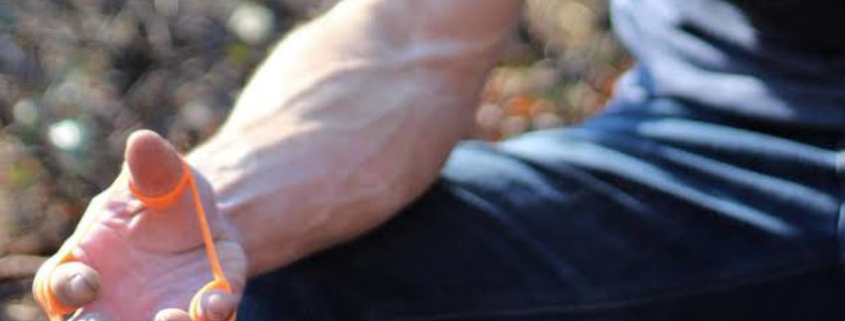Forearm flexor strain – tear
“Osteopathy is based on the perfection of nature’s work. When all parts of the human body are in line we have health. When they are not the effect is disease. When the parts are readjusted disease gives place to health. The work of the Osteopath is to adjust the body from the abnormal to the normal; then the abnormal condition gives place to the normal and health is the result of the normal condition.” Dr A. T. Still
Forearms are integral to hand and arm movement, so pain in this region can be highly disruptive to daily life. The flexor muscles/tendons are the muscles that allow you to bend your fingers through tendons. The flexor muscles start at the elbow and forearm and turn into tendons just past the middle of the forearm. They then attach to the bones of the fingers.
The most common symptoms of forearm pain include weakness or loss of grip, pain and tenderness felt in the muscles between the wrist and the elbow. Usually when gripping something and during activity, especially hand movements. The muscles of the forearm feel stiff and there could be some swelling. Severe strains involve more pain and loss of strength. You may also feel sharp, stabbing pain if you attempt to flex your wrist or apply pressure with your hand to some object. It may be extremely difficult to flex the arm upward at the elbow or to fully extend the arm with a torn or injured flexor muscle mass tendon tear or injury. Muscle spasm, in which your forearm tightens without you flexing, is another potentially painful forearm muscle tear symptom.
A forearm muscle strain is a partial or complete tear of the small fibres of the forearm muscles. Forearm muscles allow you to extend and flex your wrist and fingers. Forearm strains are graded from 1 to 3. Grade 1 is mild and involves no loss of strength. Grade 2 involves more severe pain and loss of strength. Grade 3 is a muscle-tendon rupture and requires surgery.
A forearm muscle strain can be caused by: chronic overuse, poor biomechanical movement or sudden excessive overloading with heavy lifting, inappropriate repetitive sports techniques, prolonged computer use, poor work ergonomics/posture, or manual labour/DIY, previous strain or injury to the area, suddenly overloading the forearm muscles when they are not ready for the load, receiving a direct blow to the forearm muscles. Over gripping and repetitive movements can become a strain on your forearms: holding a tennis racket, gripping bicycle handles, grasping a small tool like a screw driver, holding and moving a paint brush, carrying groceries in a bag, etc. Pain can come on gradually (as a chronic problem) or suddenly from a forceful movement (as an acute injury). Over the course of weeks and months the injury becomes painful and limiting.
Fascia is a connective tissue that entwines like a web around muscles and responds to the ways you use your body. Poor movement patterns are likely to cause fascia to gradually tighten into adhesions which will prevent muscles from relaxing and lengthening fully. When this happens, a muscle may stick to its neighbour, making them both work harder and cause strain. Over time the adhesions become more widespread. This “drag” on the motion of the muscle will make it feel like your muscles have become weak, they cannot do as much work as they used to, and pain becomes commonplace.
A forearm tear can be a serious barrier to your ability to work on a computer or maintain your fitness. Most forearm injuries can be diagnosed by an osteopath by taking a case history with a simple physical exam. A proper diagnosis will lead to faster healing. An osteopath will also explain possible factors that may have contributed to the injury such reduced wrist, elbow or shoulder mobility, poor posture or movement patterns and inappropriate exercise. Osteopathic treatment may include myofascial release, joint articulation or more subtle cranial techniques.
View a list of common complains that Osteopathy can assist with
Discovery the benefits of Osteopathy
- What is Osteopathy?
- Adult health issues
- Babies and Children
- During and after pregnancy
- Common Complaints
- Testimonials
- Sports Injuries
- Genral Osteopathy FAQs
- The Science & Reasearch



